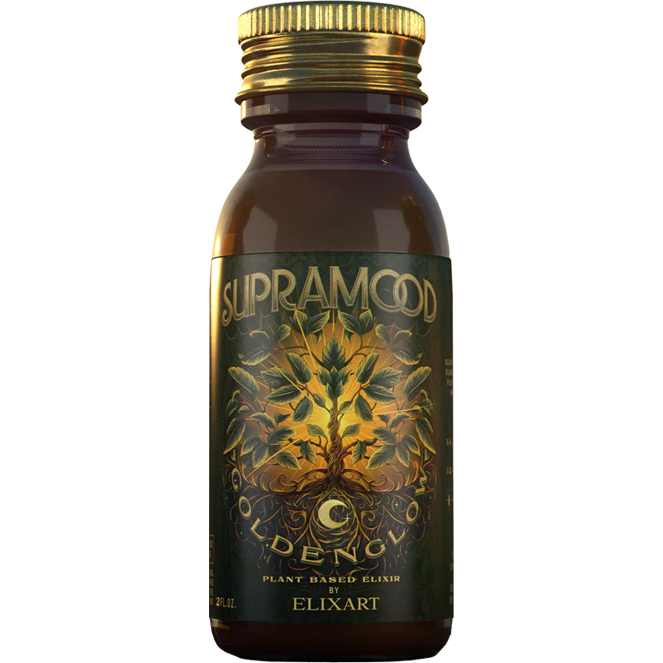Kratom is a herbal substance derived from the leaves of the Mitragyna speciosa tree, native to Southeast Asia. Known for its opioid- and stimulant-like effects, Kratom has gained prominence in alternative medicine circles. It is used for various purposes such as drug withdrawal, pain relief, fatigue management, and mental health symptom alleviation.
Anecdotal claims about Kratom's calming effects have garnered significant interest among researchers and users alike. These testimonials suggest that Kratom may offer a natural way to manage anxiety and stress, prompting further scientific exploration into its potential as a relaxant.
This article aims to delve into the scientific evidence supporting Kratom's calming properties. We will explore its origins, key alkaloids, and different strains. Additionally, we will examine studies on its analgesic properties and impact on anxiety and depression. By understanding these aspects, you can make informed decisions about whether Kratom might be a suitable option for relaxation and well-being.
Understanding Kratom: Origins, Alkaloids, and Types

Mitragyna speciosa, commonly known as Kratom, is a tropical tree native to Southeast Asia, particularly in countries like Thailand, Indonesia, Malaysia, and Papua New Guinea. The leaves of this plant have been used for centuries by local populations for their medicinal properties and stimulant effects.
Botanical Features and Native Regions
The Kratom tree can grow up to 25 meters tall and features large, glossy green leaves that are either dark or light green depending on the strain. The leaves contain a complex chemical profile, which contributes to Kratom's diverse effects.
Key Alkaloids in Kratom
One of the primary components responsible for Kratom's effects are its alkaloids. The most significant alkaloids in Kratom are:
- Mitragynine
- 7-hydroxymitragynine
These alkaloids interact with the body's opioid receptors, producing effects that range from stimulation at low doses to sedation and pain relief at higher doses.
Different Strains of Kratom
Kratom is available in various strains, each with unique compositions and effects. Some of the most popular strains include:
- Maeng Da: Known for its high potency and long-lasting effects. Often praised for its energizing properties and potential to enhance focus.
- Indo-Kratom: Originating from Indonesia, this strain is typically associated with a balanced mix of relaxing and mildly stimulating effects.
- Bali Kratom: Favored for its calming properties. Users often report significant relief from pain and anxiety.
Each strain's unique profile is influenced by factors such as geographic origin, growing conditions, and harvesting methods. Understanding these nuances can help users select the most suitable strain for their needs.
Exploring the origins, key alkaloids, and different types of Kratom provides a foundational understanding of this complex plant. The interaction between its chemical components and user experiences forms the basis for ongoing research into Kratom's potential therapeutic applications.
The Science Behind Kratom's Calming Properties
Kratom has gained attention for its potential to relieve pain. Several studies suggest that the active compounds in Kratom, specifically mitragynine and 7-hydroxymitragynine, interact with the body's mu-opioid receptors, which play a crucial role in how we perceive pain. This interaction could offer a natural alternative for managing pain. In fact, a study published in the Journal of Medicinal Chemistry found that these compounds could have pain-relieving effects similar to traditional opioids but with a potentially lower risk of addiction.
Kratom and Anxiety
People's experiences and initial research on animals have shown that Kratom can have an impact on anxiety levels. Many individuals describe feeling calm and content after taking Kratom, which has sparked scientific interest. Animal studies have indicated that mitragynine, one of the main alkaloids in Kratom, can affect neurotransmitter systems associated with stress and anxiety. While these findings are promising, it is important to conduct human clinical trials to confirm whether Kratom is truly effective and safe for relieving anxiety.
Kratom and Depression
The research on Kratom's ability to alleviate depressive symptoms is still in its early stages. Preliminary studies suggest that the alkaloids found in the plant might influence pathways in the brain that regulate mood. Some users have reported experiencing improved mood and reduced depressive symptoms after using specific strains of Kratom like Green Malay or Red Bali. However, it is crucial to note that these claims are primarily based on personal experiences and lack strong scientific evidence. More extensive clinical trials are needed to establish definitive conclusions about Kratom's effects on depression.
Key Points:
- Pain Relief: Mitragynine and 7-hydroxymitragynine show promise in pain management by interacting with mu-opioid receptors.
- Anxiety: Preclinical studies suggest potential benefits, but human trials are needed for confirmation.
- Depression: Limited research indicates possible mood-enhancing effects; however, substantial clinical validation is required.
The exploration of Kratom’s calming properties continues to evolve as more research unfolds. The ongoing studies aim to provide clearer insights into its therapeutic potential while addressing safety concerns.
Exploring Kratom's Potential as an Aid for Opioid Withdrawal
Kratom's interaction with opioid receptors in the brain has garnered attention for its potential to aid in opioid withdrawal. The key alkaloids in Kratom, mitragynine and 7-hydroxymitragynine, bind to the mu-opioid receptors similarly to opioids like heroin and prescription painkillers. This binding action can produce effects that mimic those of traditional opioids, which some individuals find helpful when managing withdrawal symptoms.
Self-Treatment with Kratom
Many people have turned to Kratom as a self-treatment option for opioid withdrawal. They report that it helps alleviate the intense cravings, anxiety, and physical discomfort associated with withdrawal. By providing a milder opiate-like effect, Kratom can ease the transition away from more addictive substances.
Key Benefits Highlighted by Proponents:
- Reduction in Withdrawal Symptoms: Users often cite significant relief from nausea, sweating, muscle aches, and insomnia.
- Mental Health Support: Some individuals claim that Kratom helps manage the anxiety and depressive symptoms that frequently accompany withdrawal.
- Accessibility: Compared to prescription medications used for detoxification, Kratom is more readily available and does not require a prescription.
Controversy and Risks
The use of Kratom for opioid withdrawal is not without controversy. Critics raise concerns about the potential risks associated with its use:
Dependence Risks:
- Potential for Dependence: Similar to opioids, regular use of Kratom can lead to dependence. Users might find themselves needing higher doses over time to achieve the same effects.
- Withdrawal Symptoms: Discontinuing Kratom after prolonged use can result in withdrawal symptoms such as irritability, agitation, and flu-like symptoms.
Safety Concerns:
- Adverse Effects: Reports of side effects like liver toxicity, seizures, and cardiovascular issues add to the debate.
- Lack of Regulation: The unregulated market means product quality can vary significantly, with risks of contamination or adulteration.
Balancing Perspectives
While anecdotal evidence supports Kratom's potential benefits in easing opioid withdrawal symptoms, these claims need rigorous scientific validation. This dual perspective underscores the importance of cautious optimism and informed decision-making when considering Kratom as a treatment option for opioid withdrawal.
Safety Profile and Side Effects of Kratom
When it comes to Kratom's safety, it's important to look at both the positive and negative aspects. There have been reports of both mild and severe side effects from using Kratom. Some common mild side effects include:
- Nausea
- Constipation
- Dizziness
- Drowsiness
In more extreme cases, users have experienced severe reactions like vomiting, itching, and increased urination. However, the most serious concerns are the potential for liver problems and seizures, especially when consuming large amounts of Kratom or combining it with other substances.
Long-Term Use and Potential Withdrawal Symptoms
Various studies have shown that using Kratom for an extended period can lead to dependence and withdrawal symptoms. Users have reported feeling irritable, tired, and experiencing muscle aches when they stop using it after a long time.
Risks of Adulterated Products
Another safety issue is the possibility of contaminated Kratom products. Since there isn't much regulation in many countries, some Kratom products may contain harmful substances such as heavy metals or pathogens. To minimize these risks:
- Buy from trustworthy sources.
- Look for lab test results from independent third-party testing to ensure purity.
- Avoid mixing Kratom with other drugs or alcohol.
Responsible Usage Guidelines
It's crucial to use Kratom responsibly to reduce any potential harm:
- Start with the lowest effective dose.
- Pay attention to how your body reacts before increasing your intake.
- Remember that everyone's experience with Kratom can be different due to factors like body chemistry and the specific strain used.
FDA Warnings and Precautions
The FDA has released public health advisories about Kratom, highlighting its potential for misuse and issues with contamination. Until more research is done, it's wise to be cautious and seek advice from healthcare professionals before using Kratom.
Additional Information on Kratom
For a more comprehensive understanding of Kratom, you can refer to reliable sources such as WebMD and USA Today which provide further insights into the subject.
Stay Updated for Safe Usage
Keeping yourself informed about the changing regulations and scientific knowledge surrounding Kratom will help you use it safely while exploring its potential benefits.
Legal and Regulatory Status of Kratom
Current Legal Framework
The legal status of Kratom varies widely from country to country. Here's an overview of how it stands in different parts of the world:
United States
In the United States, the legality of Kratom differs by state. Some states have banned its sale and possession, including Alabama, Arkansas, Indiana, Rhode Island, Vermont, and Wisconsin. On the other hand, there are states that allow its use but have regulations in place to ensure consumer safety.
Southeast Asia
Southeast Asia is where Kratom is native to, and its legal status there is also quite diverse. Thailand recently legalized Kratom in 2021 after many years of it being prohibited, acknowledging its potential medicinal benefits. However, Malaysia and Myanmar still have strict bans on Kratom due to concerns about public health and safety.
Europe
European countries have their own approaches when it comes to Kratom:
- United Kingdom: Banned under the Psychoactive Substances Act of 2016.
- Germany: Classified as a controlled substance; illegal to sell or possess.
- Italy: Legal but regulated under pharmaceutical laws.
FDA Regulation
The U.S. Food and Drug Administration (FDA) has not approved Kratom for any medical use because of worries about its safety. While the FDA considers Kratom a dietary supplement, it has released several public health advisories cautioning against its consumption.
Here are some important points highlighted by the FDA:
- Public Health Advisories: These advisories raise awareness about potential risks such as addiction, abuse, and contamination with harmful substances.
- Product Recalls: There have been cases where certain Kratom products were recalled due to contamination with heavy metals or pathogenic bacteria like Salmonella.
- Research Limitations: The lack of extensive clinical trials makes it difficult to establish safe dosage guidelines or confirm the actual benefits of Kratom for various conditions.
The FDA is actively monitoring the entry of Kratom products into the market and has taken enforcement actions against companies that make unverified health claims. This regulatory oversight aims to safeguard consumers while also allowing for further research on the potential effects of Kratom.
Understanding these legal and regulatory landscapes is crucial for anyone considering Kratom use. By following local laws and being aware of FDA guidelines, individuals can better manage the risks associated with this controversial plant.
The Future of Kratom Research and Its Implications
Key Areas for Further Scientific Investigation
There is still a lot we don't know about Kratom and its potential benefits and risks. To gain a better understanding, it is important to focus on the following areas:
1. Mechanisms of Action
Detailed studies are needed to understand how Kratom's alkaloids, specifically mitragynine and 7-hydroxymitragynine, interact with the body's receptors.
2. Long-term Effects
Comprehensive long-term studies are necessary to assess the impact of regular Kratom use on both physical and mental health.
3. Therapeutic Applications
Further research is required to investigate specific conditions where Kratom might offer benefits, such as chronic pain, anxiety, depression, and opioid withdrawal.
4. Dose-Response Relationships
It is important to clarify how different dosages of Kratom affect individuals in order to establish safe consumption guidelines.
Challenges in Conducting Rigorous Clinical Studies
There are several obstacles that researchers face when trying to conduct thorough clinical studies on Kratom:
- Legal Restrictions: Varying regulations across countries make it difficult to carry out international or comprehensive studies. In some regions, Kratom is classified alongside controlled substances, limiting research opportunities.
- Product Quality Variability: The inconsistency in Kratom product quality poses a significant challenge. Contamination and adulteration issues make it difficult to ensure that study participants are consuming standardized doses.
- Funding Constraints: Limited funding for research on substances with controversial legal status hampers extensive investigations.
- Public Perception: Public controversy surrounding Kratom can influence regulatory bodies and funding agencies, impacting the scope and direction of research efforts.
Potential Uses Under Investigation
While more research is needed to fully understand its effects, there are several potential uses for Kratom that are currently being explored:
1. Pain Management
Mitragynine, one of the main alkaloids in Kratom, has shown potential in interacting with opioid receptors, suggesting a possible role in managing chronic pain without the high addiction risk associated with traditional opioids.
2. Opioid Withdrawal Aid
There is anecdotal evidence supporting the use of Kratom as a self-treatment option for opioid withdrawal symptoms, though more structured research is needed to validate these claims.
3. Mental Health Support
Preliminary findings indicate that Kratom may have anxiolytic (anti-anxiety) and antidepressant properties, requiring more robust clinical trials to confirm efficacy.
Addressing Research Gaps and Challenges
It is crucial to address these research gaps and challenges in order to fully understand the potential benefits and risks of Kratom:
- Conducting more studies on how Kratom works in the body and its effects.
- Investigating the long-term effects of Kratom use.
- Exploring different potential uses of Kratom, especially in managing pain and mental health conditions.
- Understanding how different doses of Kratom affect individuals.
- Finding ways to overcome legal restrictions and funding limitations for research.
- Ensuring that Kratom products used in studies are of high quality and free from contamination or adulteration.
- Addressing public concerns and educating both regulators and the general public about Kratom based on scientific evidence.
By addressing these issues, we can unlock the full therapeutic potential of Kratom while ensuring its safety and effectiveness for users worldwide.
Conclusion
While there are some personal stories that suggest Kratom may have calming effects, it's important to note that these claims have not been scientifically proven. More research is needed to determine the true benefits and risks of using Kratom.
If you're considering trying Kratom, here are a few important things to keep in mind:
- Always consult with a healthcare professional before adding any new substance or supplement to your routine.
- Stay informed about the laws and regulations surrounding Kratom in your area to ensure that you're using it legally and responsibly.
For those who prefer treatments that are supported by scientific evidence, there are other relaxation techniques and medications available that may be more suitable options:
- Mindfulness meditation
- Yoga
- Cognitive-behavioral therapy (CBT)
It's crucial for advocates of Kratom to prioritize responsible use and safety. By promoting education, encouraging research, and advocating for sensible regulations, we can work towards a better understanding of Kratom's potential benefits while ensuring public health and well-being.
FAQs (Frequently Asked Questions)
What is Kratom and why is it relevant in alternative medicine?
Kratom is a plant known for its potential calming effects, which has made it relevant in the field of alternative medicine. It has garnered widespread anecdotal claims about its ability to promote relaxation and alleviate various symptoms, leading researchers to explore its scientific evidence.
What are the key alkaloids present in Kratom and how do they contribute to its effects?
Kratom contains alkaloids such as mitragynine and 7-hydroxymitragynine, which are believed to interact with the body's receptors and contribute to its effects. These alkaloids are thought to play a role in Kratom's potential as a natural relaxant.
Has scientific research investigated Kratom's potential for pain relief, anxiety, and depression?
Yes, studies have explored Kratom's potential analgesic properties as an alternative for pain management strategies. Additionally, there have been investigations into its impact on anxiety levels and limited research suggesting a role in alleviating depressive symptoms.
How is Kratom being explored as an aid for opioid withdrawal, and what are the associated concerns?
Kratom's interaction with opioid receptors has led to its use as a self-treatment option for individuals experiencing opioid withdrawal. However, there is controversy surrounding this use, with proponents highlighting potential benefits and critics raising concerns about dependence risks.
What is the safety profile associated with Kratom use, and what are the reported adverse effects?
An objective assessment of the safety profile associated with Kratom use takes into account available data and reported adverse effects. It is important to highlight responsible consumption practices and avoid potentially adulterated Kratom products.
What is the current legal status of Kratom, and how does the FDA regulate it?
The current legal framework surrounding Kratom varies across different countries, with a focus on approaches to its sale and possession. The FDA's stance on Kratom as a dietary supplement includes public health advisories and product recalls due to contamination issues.
What are some key areas that require further scientific investigation regarding Kratom's therapeutic potential?
Key areas that require further scientific investigation include understanding the therapeutic potential and risks associated with Kratom. Researchers also face challenges in conducting rigorous clinical studies due to legal restrictions and variable product quality.
Is there conclusive evidence validating the calming properties of Kratom, and what precautions should be taken when considering its usage?
While anecdotal evidence suggests that Kratom may have calming properties, more research is needed to validate these claims and inform safe usage guidelines. It is important to approach Kratom with caution, seek professional medical advice, stay updated on regulatory changes, and consider evidence-based treatments or relaxation techniques.








Leave a comment
This site is protected by hCaptcha and the hCaptcha Privacy Policy and Terms of Service apply.